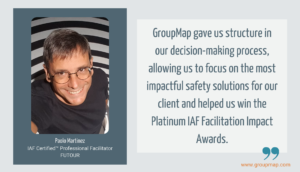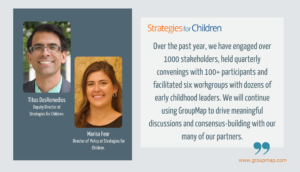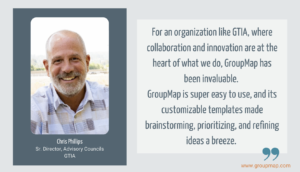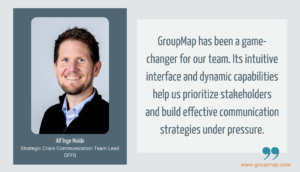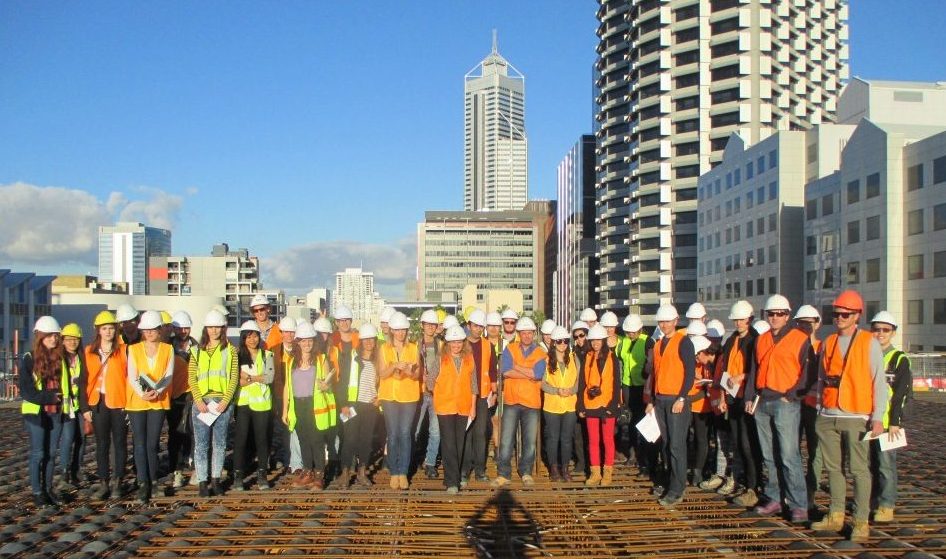
Outcomes from student engagement in collaborative brainstorming
Educators in the 21st century know learning is enhanced by getting students to engage collaboratively, contribute ideas and to provide targeted, specific feedback from online brainstorming tools through to richer facilitated classroom discussions. The transition does not require a re-writing of curriculum, a redesign of tasks or having to spend copious amounts of time generating new content. It can be as simple as letting go of a control-oriented mindset to one that guides and helps students accelerate their own learning.
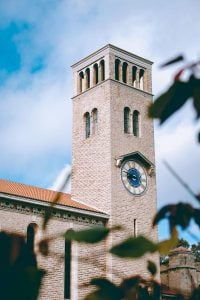 Moving from being the ‘sage on the stage’ to a flipped classroom where students become independent learners who work as a collaborative cohort has been the main benefit experienced by Sophie Giles from the University of Western Australia. Rather than having students simply sit and listen, she has been able to get 88 to 92% of students to actively contribute to learning outcomes with 300 students over a 3 year period. Getting such high levels of engagement has been shared by her colleagues and reflected in student evaluations.
Moving from being the ‘sage on the stage’ to a flipped classroom where students become independent learners who work as a collaborative cohort has been the main benefit experienced by Sophie Giles from the University of Western Australia. Rather than having students simply sit and listen, she has been able to get 88 to 92% of students to actively contribute to learning outcomes with 300 students over a 3 year period. Getting such high levels of engagement has been shared by her colleagues and reflected in student evaluations.
Giles is the Head of the Department of Architecture, Landscape and Urban Design at the University of Western Australia. She has worked as an Architect on projects ranging from residential luxury fit-outs to renovations and extensions. She teachers in a blended learning classroom where students are challenged with applying ‘real-life’ codes to their current design projects, they are also given opportunities to contribute collaboratively.
Students undertake four extensive site visits, in order to analyze, explore and evaluate a building. Then across the term, thoughts, images and resources would be added by each student, branching out from a central theme. The goal is to understand the construction of the building from practical features, relevant building codes, services provisions, through to material choices
Student-centric teaching philosophy and collaborative mind mapping
As with any great educator, her goal is to engage students, allowing them to contribute and share ideas and to deepen their learning through interactivity and collaboration. Whilst Giles is an experienced Architect in the industry and could easily note the key features and design elements from a site visit, her goal to deliver a more student-centric, socialized, and engaged learning experience meant she had to find the right solution. “I used to define the top 10 terms from each site visit, prepare the material and then have to broadcast these as the ‘sage on the stage’.”
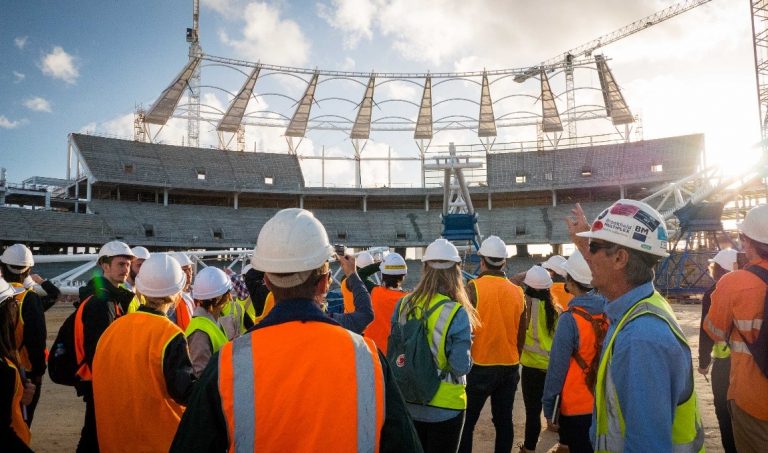
“I wanted to increase contributions by all students,” Giles explains, “specifically the goal was to encourage much more detailed content, by many. [This meant] an increased investment, by the students, in the co-creation of content.” This is a great way not just to get students engaged, but also deepen and socialize the learning experience.
Giles uses a collaborative mind map format for students to share architectural content and to brainstorm online having conducted a site visit. She elaborates, “Importantly, for the architectural content, I needed the students to have the ability to upload images and files, so each ‘mind-map’ is a rich repository of co-created content. GroupMap does this better than any other platform.” As Giles shares, “we have an excellent digital platform and a place, outside of the tutorial room, in which we all come together to contribute, synchronously and asynchronously.”

Giles has used GroupMap in the core unit ARCT4430 in the Master of Architecture for the last 3 years. “Each year has had around 100 participants. So over 300 students have created at least 30 separate mind-maps.” she highlights.”The ease of use for students, the clarity of the page and the ability for students to search for appropriate images to illustrate and communicate are really useful features… [There has been] Very little resistance by students in immediately embracing the platform, as they could see how easy it was to use and the benefit they receive from contributing to help grow the content together.”
 Forrest Hall, University of Western Australia. Kerry Hill Architects, construction by Jaxon
Forrest Hall, University of Western Australia. Kerry Hill Architects, construction by Jaxon
Now, rather than simply telling students what the top ten terms are Giles states that “now the students are contributing 50-100 terms together, curating these and learning from each other with such a level of engagement and appreciation” This 5x to 10x multiple in terms of familiarizing students with terminology, understandingand developing the vocabulary of the discipline all demonstrates the power of harnessing the wisdom of the crowd.

Of course, it is important to give feedback to students, ensure accountability and to be able to differentiate between student contributions. Giles explains, “ I monitor the maps and comment on student contributions to validate them, as well as mention them in face to face settings during the lecture or tutorial if there are particular posts which are detailed and content-rich.” She continues, “the list of contributors in each map has also been really helpful to keep track of who has been active and engaged, and who has not.”Giles also appreciates how quick it is to use and set up which she says is “also another great benefit and remarkably helpful in the pre-term crush of preparation.”
Insights into students brainstorming ideas online
Giles elaborates her observation as to how students engage with GroupMap, “the timing of their posts, which have been in the hours directly after a site visit and prior to a lecture and tutorial the following day has given them each a reflective outlet that is not onerous to engage with.” She continues, ”often the students are posting or contributing at around 8-10pm and then the following day will then more deeply read through the other material that has been contributed, saving links, ‘liking’ or curating the mind-map. This double use reflection has remarkable benefits in the retention of this newly gained knowledge.”

“The students then use their co-created ‘maps’ later in the semester to revise from and to draw on for further information in their own assessments. In the three years I have used GroupMap the contributions have always been voluntary by the students in the unit, but each year only 4-6% of students have not contributed anything, with the majority (88-92%) contributing to each of the maps across the semester. I am really appreciative of the strengthened learning that the GroupMap platform has availed to my 300 students over this time.” Giles explains.
Digital environments can have positive impacts on student creativity and idea generation but it does require guidance and structure to help proliferate and promote the process in a non-intrusive, but moderated fashion. Giles’s love of digital, online collaborative brainstorming ensures that students have a safe space to contribute and receive feedback allows for ideas to proliferate and for learning to be both visible to all and evident.

By using the number of students in the cohort to each contribute on the remarkably easy to use Groupmap mind-map platform, the depth and scope of content each week grows enormously. When previously I would have selected and prepared the ‘top ten’ terms each week to broadcast, the students now contribute their own, coupled with links and images. This has increased the content by more than ten times, while being relatively quick and easy to use for the students. This is work I don’t need to do.
For the students this increased content is then also about inclusion, engagement and investment through this co-created knowledge. My role in moderating the contributions is really easy and enjoyable and can be done synchronously or asynchronously while the students are posting.
The contributions by all students, including those who in face-face classes have a much quieter presentation is really successful, with appreciation of each others contributions in a ‘safe-space’ digital platform, without any anxiety of a tutorial setting. I am so glad GroupMap has helped me to find these benefits to the students in their learning and their investment in co-creation. – Giles
Sophie Giles’s TIPS for building student engagement
- You can easily scan the map for unread comments so it’s an excellent function to streamline moderation of pages and to give feedback.
- Use the reports to gauge engagement in your student cohort. This will allow you to positive reinforce excellent contributions as well as put in strategies to address students who may not be engaging, struggling or lacking confidence.
- Giving students the freedom to contribute their findings. They learn so much more when given the opportunity to develop and apply the knowledge to real life situations.
- Creating maps is easy and a real time saver because students are in charge of co-creating content and it allows you to manage knowledge gaps rather than having to prepare content all the time.
- Having an artefact of learning from a site visit and activity is a great reflective outlet as well as a useful revision piece for students to help them retain the newly gained knowledge.
Sophie Giles is the Head of Department (Architecture, Landscape Architecture + Urban Design) in the School of Design, coordinating and teaching in Design as well as Architectural Technology in the Master of Architecture. Sophie has worked in an award-winning Australian practice since registering as an architect, and is now a director of her own practice. In all of her work she is passionate about design and the realising of design in physical form.
Very much a ‘hands-on’ architect, she developed a Master of Architecture elective Built Work to enable final year students to construct 1:1 details, to understand ‘the great works’ in their physical form as well as their theoretical place. She was a member Australian team felix._Giles_Anderson+Goad for the Biennale di Venezia, 2014, working closely with the AIA. As a Fay Gale Fellow she was a visiting academic to ETH-Zurich and the Graduate Emtech Program at the Architectural Association in London.
In her recent sabbatical she has been researching tall-timber structures, structural optimisation to massively reduce material waste in construction as well establishing an open source multilingual construction glossary for increased internationalisation of the curriculum. Her recent connections with academics, architects and engineers in China, Japan, Finland and the US will help in the capacity building of the School and community engagement of the University.
Learn more about the School of Design at the University of Western Australia.
Inspired? Create your own online brainstorming activity for your classroom.

